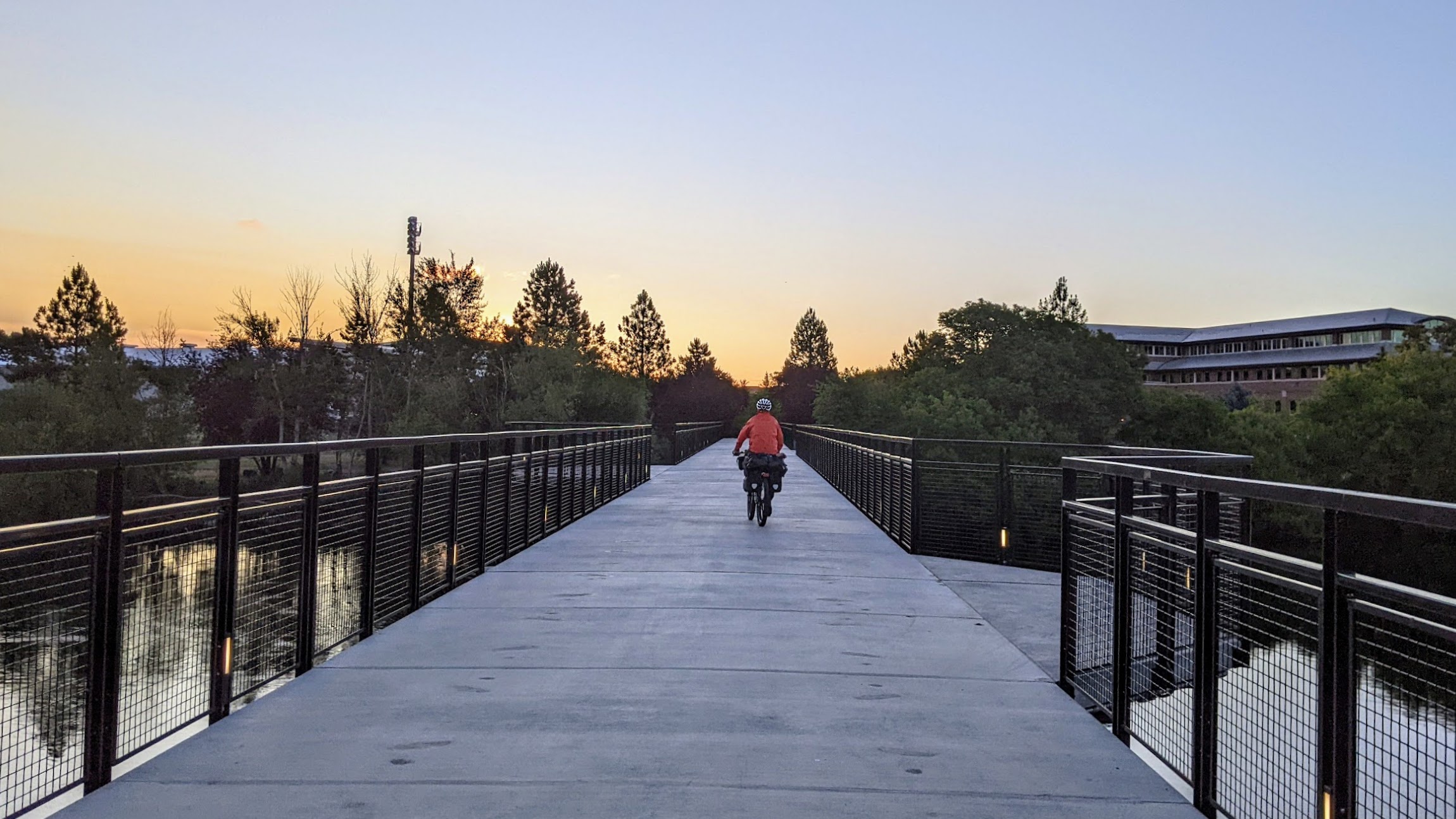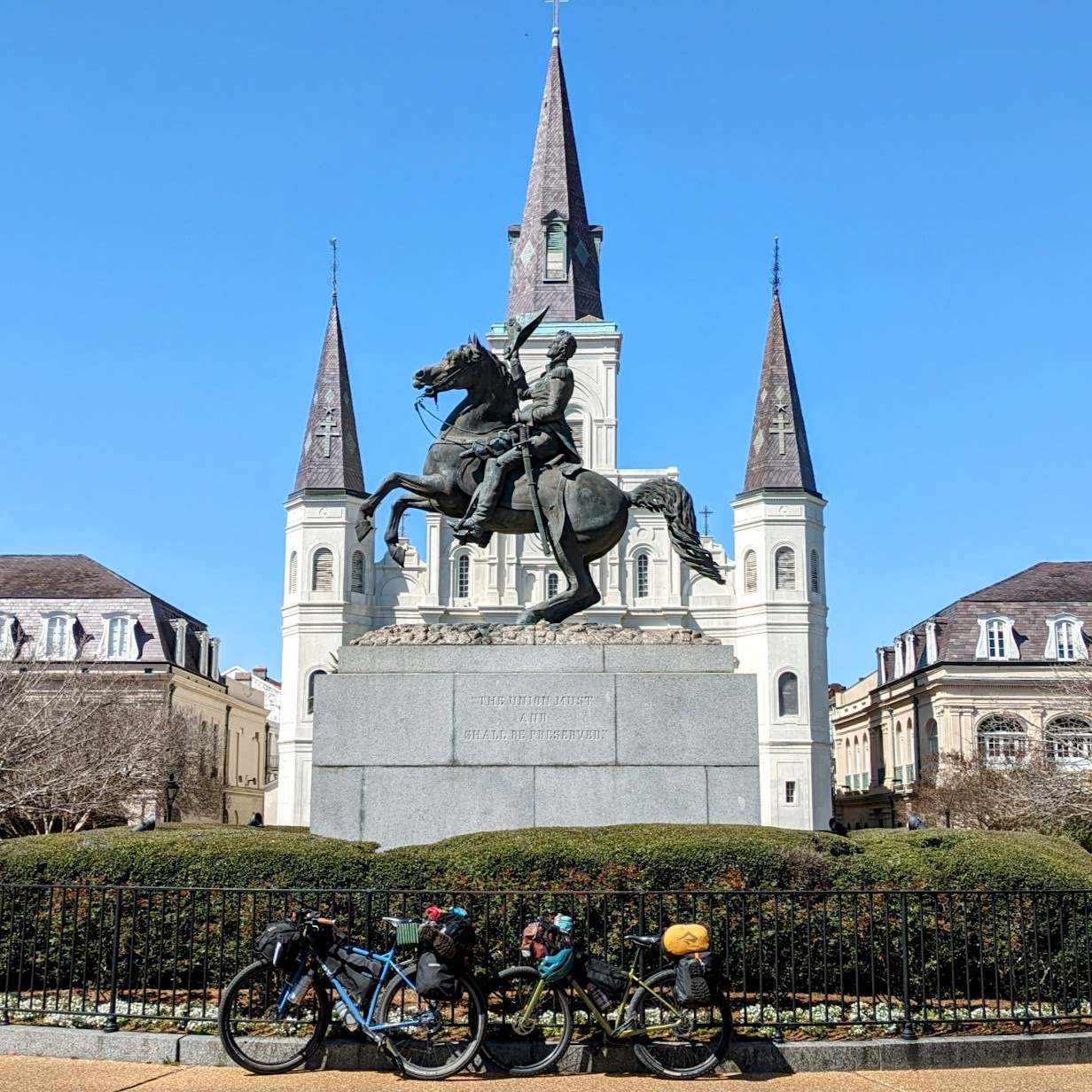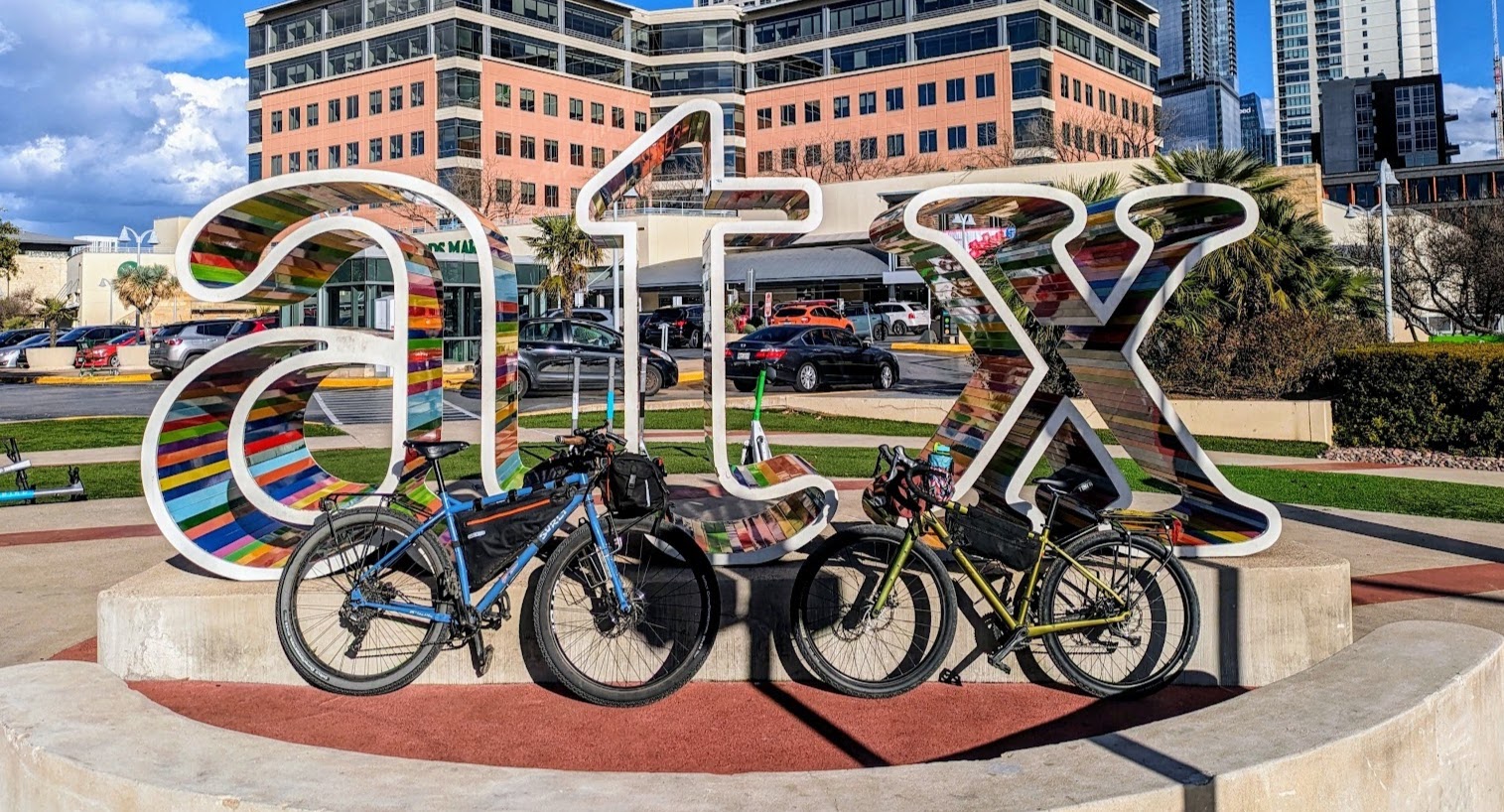When you go and visit Glacier National Park, you know there are grizzly bears. If you visit Los Angeles, you’re going to deal with a lot of traffic. If it rains, you’re likely to get wet. These are all facts of nature.
The same rings true for touring cyclists in rural areas: You’re going to have aggressive dog encounters.
Cortney and I started seeing strays and loose dogs more frequently in Arizona. But by the time we hit East Texas, the dog situation was off the charts. One day we took a beautiful circuitous 75-mile route from Shepherd, TX, through the Big Thicket National Preserve, and into Silsbee. The effort required to ride a loaded touring bike that distance is one thing, but adding attack dogs into the mix is terrifying. (And exhausting.) We actually lost count of crazy dog encounters at around 30 that day alone.
Keep in mind, we aren’t trespassing on anyone’s land. We aren’t snooping. We aren’t taunting the animals. It all comes down to people who either don’t tie up their animals, choose let them run loose as a kind of cheap backcountry sport, or don’t have the resources to fence in their properties.
Being chased by mean barking dogs is scary. But if you’re going to cycle through certain parts of this country, you need to accept that it’s a natural part of the landscape. The best thing for Cortney and I to do along these rural stretches is to be as prepared as possible. We aren’t animal professionals by any means, but here are a few simple strategies that have helped us so far:
ABS (Always Be Scanning). In many parts of the U.S., it’s not uncommon to ride by dilapidated homes with yards full of old junked cars that are being reabsorbed by the earth. The loose dogs often come from homes like these, so we do our best stay extra vigilant. In one instance, we noticed some unleashed dogs in a yard ahead and crossed the road to avoid an encounter. A good move.
Don’t show fear or try to outrun the animal. When you’re loaded, you move at party pace. Unless it’s a really old dog, your chances of outrunning a canine are slim to none. Going faster and showing fear kicks their chase instinct into overdrive. Most of the time, I’ll slow way down to distract the aggressive dogs we encounter and let Cort race ahead. Slowing down helps null their instinct and takes the attention off Cortney. However, there have been exceptions. When we were in Shepherd, there were a string of houses with several dogs at each. So while I could distract a small pack of snarling mean dogs, another set came out of the next property and headed toward Cort. They were coming at us like TIE fighters.
Make yourself big and use your voice. On top of slowing down a bit, I like to make myself look bigger and swing one of my arms up and down. I use my deepest wildest voice and yell over its barking. Something like “NO!!” or “Don’t even think about it” or “I wouldn’t do that if I were you.” More often than not, the dogs flinch and stop barking and chasing. (Hopefully, this tactic will continue to be successful.)
Limit your time on the country roads. While the road less traveled might have less traffic, they’ve got way more dogs. So in many instances, you pick your poison: either ride a busier roadway or take the route with loose dogs. For us, we’ve been trying to limit our time on the smaller roads lately and have had fewer encounters.
Carry something with you. The last thing we want to do is hurt the animal, but at the end of the day, we’re going to protect ourselves. I’ve kept my bicycle pump handy and wave it at the animals when they get close and jump at my bags. That, along with my crazy shouting, seems to be working well in this moment. Keeping a few rocks in our feed and top tube bags is an option, too. We’ve also heard of people carrying bear spray or an air horn. Our new favorite is the opposite approach where you toss a few dog biscuits to distract them. (We might throw that into the mix moving forward.)
The bottom line is it’s not a dog problem. It’s an owner problem. If people want to have dogs protect their property, that’s cool. But the road isn’t your property. Building a fence would be the simple solve, but for many folks in rural areas, resources are short. You could tie up your animals too, but I suppose letting your dogs loose on middle-aged cyclists is fun? Training your dogs also makes sense, but that ties back to resources and education.
For us, our dog days are far from over. Louisiana, Mississippi, and Kentucky all have impressive reputations. Safety is #1, so we will be as vigilant and aware as possible.
If you have any tips or experiences about handling aggressive dogs, feel free to leave a comment. We’d love to hear about it.
-Erik




50/50 mix of vinegar and water in a squirt gun. Spray in face. Read this online and it said humane society approved. Might be worth a try. Don’t get bit!
It’s definitely worth a try. Especially with a super soaker! Thanks, Pops!!